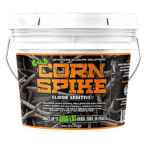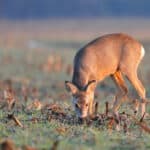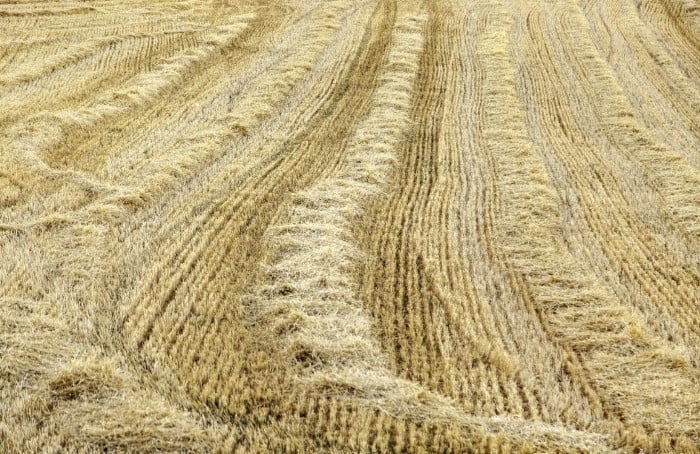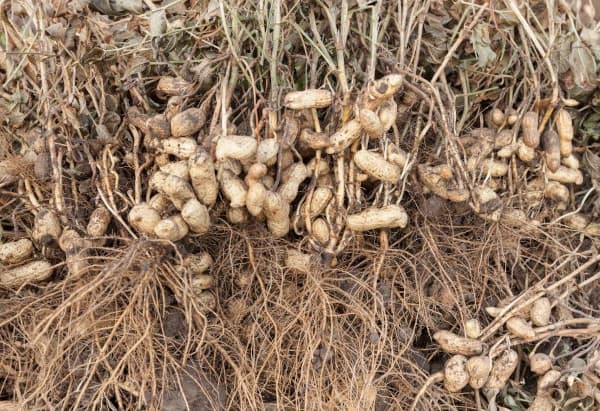Food plots that deer can’t resist can be created with a little bit of sweat, the correct seeds, a few hand tools, and some creative use of small gaps in the landscape. You may not have the time, money, or equipment necessary to construct and manage big feeding plots on your hunting property, regardless of the amount of land you own. This could be the case whether you own 10 acres or 200 acres.
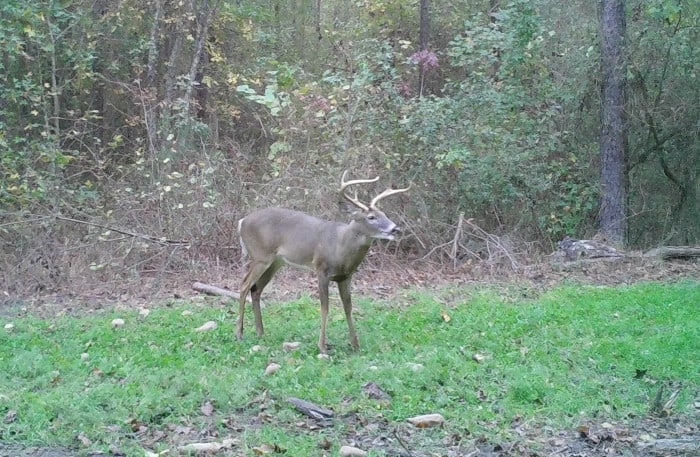
Let’s face it: Some of us aren’t cut out to be part-time farmers and may not be inclined to start leasing farm machinery. But, despite this, we wouldn’t mind dabbling in a food plot or two so long as it doesn’t cost too much money to do so.
This leads us to the topic at hand, a poor man’s food plot. The “poor man’s food plot” phrase has been around for years, and there are several different theories as to who actually coined the term.
Defining a Poor Mans Food Plot
Traditional food plots generally require some kind of farm equipment to clear, prep, seed, and fertilize the land. Unfortunately, farm equipment is extremely expensive to purchase and even more costly to rent by the hour. Since those machines are cost-prohibitive, they create a serious roadblock for most hunters or leaseholders, looking to dip their toes into food plots.
This is where the so-called “Poor Man’s food plot” comes into play. This style of plot is much smaller than most traditional plots and can be prepped, seeded, and fertilized with manual tools and manual labor.
The smaller plot size and manual tools approach also reduces the costs associated with traditional food plots. So, a poor man’s plot is basically a manually created food plot on a budget.
Food Plot Size
While a traditional food plot can range from 2 acres and up, the poor man’s version of a food plot is typically much smaller. Generally, a PMFP (a quick homemade acronym for Poor Man’s Food Plot) uses a plot size of ½ acre or less.
If you wanted to visualize the size of ½ an acre, think of a rectangle that is 100 feet across and roughly 200 feet long, and you’ll be pretty close to ½ an acre.
Although, to be honest, most of the PMFP’s that I’ve done are smaller than that. My smallest was about 50 feet by 50 feet, and it did its job very well.
Now, you can make a PMFP at whatever size you like, so don’t think that one “has” to be 100 x 200 feet, or it won’t work.
However, keep this in mind, the larger the plot size, the more potential effort involved to clear and prep the plot for seed.
Small Food Plot Goals
Smaller PMFP’s have a different function compared to a larger, more traditional food plot. While conventional food plots offer a number of benefits, most hunters use them as hunting locations.
The smaller PMFP plots will draw deer, but hunters are best served by hunting around the plot versus hunting right over it. I prefer to position a tree stand between a PMFP and a bedding location or between two PMFP’s with a clear travel path for whitetail deer. About the only time I hunt directly on a PMFP is during the rut because the PMFP’s draw does, which will draw bucks.
In some ways, the smaller food plots offer some advantages over larger plots in areas besides the reduced costs. For example, a PMFP can be used for the following:
- Test new seed or seed type without committing to a large-scale planting.
- Offer some food diversity for the whitetails.
- They offer a faster prepping and planting if you missed a planting window.
- Typically, do not require soil testing to be effective.
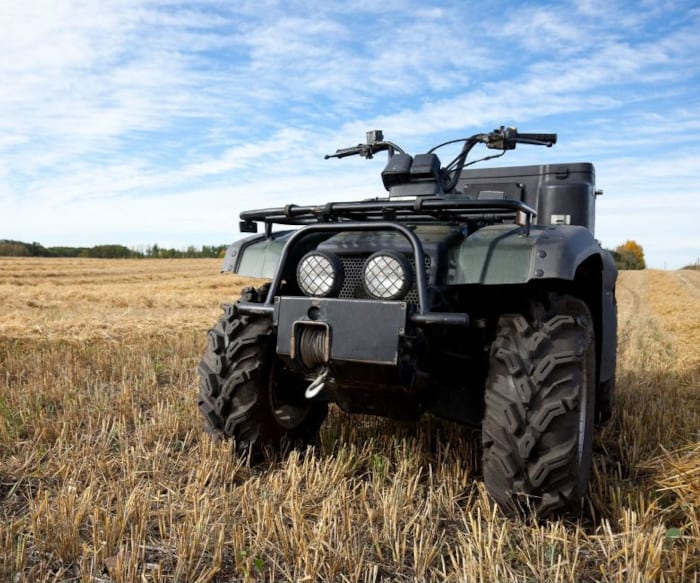
Choosing a PMFP Location
Choosing the ideal location for a poor man’s plot can be challenging as you’ll need to meet the following requirements:
Sunlight
Regardless of the seed styles or options that you choose for this new plot, those seeds will require a minimum of two to three hours of daily direct sunlight to germinate and grow properly. Without the minimum 2-3 hours, the plot results probably won’t be worth the effort.
Fertile Soil
Since most PMFP’s are done on a budget, “most” hunters will skip the recommended soil testing since it requires little time and money. As such, choosing an area with soil with a proven history of growth is imperative.
Here are a few easy ways to choose fertile soil without soil testing:
Wooded Areas
Most soil supporting tree growth is more than sufficient to support a food plot. So, any location in a wooded area with good tree growth is a candidate. The trick with wooded areas is ensuring that the plot receives a sufficient amount of direct sunlight.
Heavily Weeded Areas
Any area with heavy weed growth most likely has soil that will also support a food plot. Obviously, the weeds will have to be addressed before planting, but the presence of heavy weeds typically indicates decent-quality soil.
Choose a Location That is Convenient for the Deer, Not Convenient For You
With most PMFP plots that fail or don’t draw deer well, the plot location is the primary issue. And in most of those situations, the plot location was selected by on convenience or easy access for the hunter versus being selected based on the deer’s needs.
I generally try to place my PMFP plots near a confirmed bedding area or a thick cover area I know is being used. This approach also ties into my preferred hunting approach, which is placing a stand in a location between the cover and the plot. I’ve had excellent luck with this approach.
When I’m scouting for PMFP prospective locations, I like the following areas:
- Old vehicle or ATV trails that are no longer in use
- Logging trails
- An old logger’s landing deck
- An area where several large trees fell and opened a spot in the tree canopy (one of my favorites)
- Old homestead sites
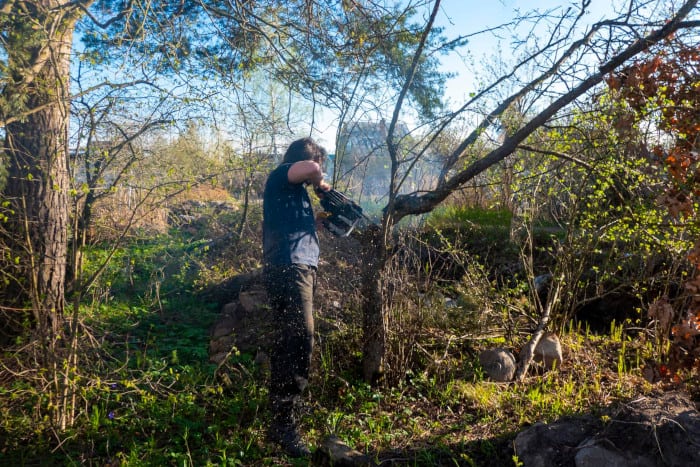
Prepping the Plot
Another critical aspect of the poor man plots is the actual plot-prepping process. Remember, since we aren’t using any farm implements, all the plot prep is usually done manually.
Here are a few tips and tricks that I’ve picked up along the way that have been game-changers for plot prepping:
A Gasoline Powered Backpack Blower is Your Friend
While a rake is the least expensive tool for clearing and preparing a small food plot, I much prefer a backpack blower for the job, especially in wooded areas. But, of course, a traditional gasoline-powered blower will work as well.
I find that a strong backpack blower is most effective and can clear a 100-foot by 100-foot plot area of leaves surprisingly quickly. I generally start in the center of the plot and begin blowing outward in circles. By using circles, the volume of blown leaves won’t pile to the point that the blower cannot move them.
A Small to Mid-size Chainsaw Can Be Well Worth the Money
Another tool that I find invaluable with plot preparation is a smaller chainsaw. While a larger one works well too, I prefer a smaller model as they are easier to transport and can handle almost any job with some planning.
I always lean towards the Stihl brand of chainsaws as they hold up well and perform great, but they aren’t cheap.
Invest in a Backpack Sprayer
When it comes to spraying for weeds or liquid fertilizer, a backpack sprayer may be the easiest and most helpful piece of equipment in your arsenal. I find this type of sprayer to be invaluable compared to a traditional handheld sprayer.
If You Don’t Absolutely Need A Tree Removed, Consider Hinge Cutting
In situations where there’s a tree (or trees) in my preferred plot location, I prefer to hinge cut the tree (assuming it makes sense) instead of completely removing it.
If you aren’t familiar with hinge cutting, it’s a phrase used to describe a tree-cutting method where the tree truck is only partially cut. Then the tree is pushed or forced over to the ground. The partial cut means that a portion of the tree stays alive and continues to produce foliage. This approach offers two benefits at once:
(1) The fallen tree functions as potential bedding or resting cover for deer.
(2) The foliage or buds provide an additional food source.
The downside to hinge-cutting a tree in a PMFP is that the fallen tree takes up space you could use for planted food. That being said, I’ve had good luck with the hinge-cutting approach, but it may not make sense all the time.
If you Cut Down Trees, Leave the Stumps
Typically, if a tree has to be removed, most hunters cut it as close to the ground as possible and then either bury the stump or try to remove the stump. However, I prefer to take a different approach: I cut the tree down and leave at least two feet of the tree stump above the ground. Then I use a pruning sealant to seal the top of the stump off.
With this approach, the stump won’t die and may continue to produce foliage and buds (which some call “perennial woody browse” as a deer food source.
Use a Weedkiller to Eliminate Weeds
Once the plot is cleared, you’ll most likely want to spray with a weedkiller product (Roundup is the most popular) to kill any existing weeds.
I prefer using Roundup (glyphosate) for this and most weed management because there are so many Roundup-ready seed options on the food plot market now.

Choosing the Food Plot Crop – Annuals or Perennials?
The final step in the plot preparation process is choosing the type of crop for the plot.
When selecting seeds for your economy-class food plots, one of the most important factors to take into account is the amount of time and effort you can devote to their upkeep.
Most seed companies recommend sticking with annual plantings because they assume hunters with a “poor man’s” attitude will not want to do the mowing, fertilizing, and supervising that perennials require.
In either case, most seed manufacturers acknowledge that there is just as much variety in the approaches deer hunters take to food plots as there is in their selection of broadheads. In addition, they are aware that most bowhunters desire one package that can do almost everything. Because of this, companies that sell seeds offer seed mixes that provide a variety of forages, the performance of which varies depending on the climate and the growing season.
Most perennials can be grown successfully using the poor man’s approach, as their seeds are typically relatively small and do not require tilling the ground. Instead, simply uncover the soil and sow the appropriate seeds, such as chicory and clover.
It is always beneficial to work the soil to aerate it and assist the plants in better establishing their roots; however, this is not always possible with plots that are tucked deep within the woods. It is unnecessary to do anything more than lightly rake the soil; all that is required is a light misting of rain to bring the seeds into soil contact.
Since annuals and perennials both have benefits, most people who are serious about managing food plots can make a case for either type of plant.
Over the years, I’ve tried several different seed configurations for the poor man’s food plot, and here are my top choices:
Clover Mixes
If I had to pick just one seed to recommend for a poor man plot, it would easily be clover. Clover mixes are my first seed choice for a poor man plot for the following reasons:
· It’s shade tolerant and grows well with minimal sun.
· Does well in almost any soil condition.
· Whitetails respond very well to clover.
· It’s a perennial, so with a bit of upkeep and weed management, it will produce year after year.
· Clover is easy to put down by hand and has a high germination rate.
Winter Rye
Another seed I like for PMFP’s is winter rye because it’s one of the most durable and heartiest of the cereal grain family. Here’s why I’m such a fan of Winter Rye for these cheap micro food plots:
· It can grow in almost any soil with nearly any Ph.
· It requires little to no fertilizer and grows faster than any other cereal grain seed.
· Winter rye produces a ton of food per acre.
· The Winter Rye seeds can germinate and grow at temperatures just above freezing.
There are two things that I don’t like about Winter Rye:
(1) I’m not always a fan of the dry matter organic material it leaves behind, which will have to either be manually tilled under or burned off before the next seeding.
(2) If you plant winter rye too early in the summer, it will grow faster than the deer can keep it grazed down. In those instances, the plants become tall with stiff stems, which Whitetails don’t seem to like. The ideal winter rye plot is a carpet of short, lush, green plants.
Poor Man Plot Costs
One of the most common questions I see associated with poor man plots is: how much will a poor man plot cost me? Or, what’s the least amount of money I can spend on a small food plot?
The answer really depends on several factors, including the size of the plot, the seed blend used, and the cost of fertilizer (if applicable). Most PMFP’s cost between $50 and $200 per plot. I’ve seen good success with small plots that costs about $50 each to get up and running.
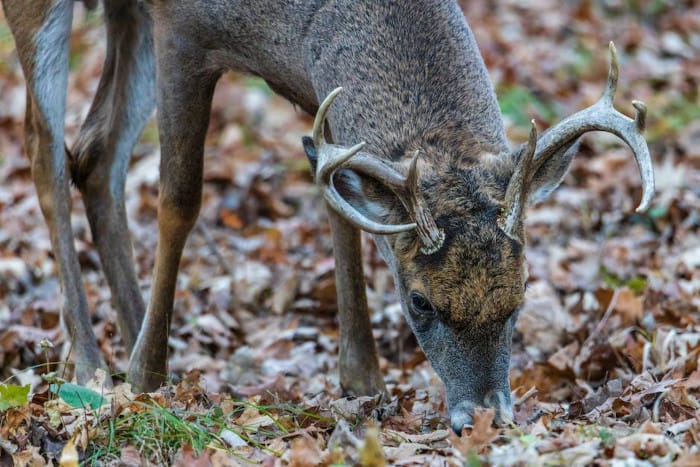
FAQS
Here are some frequently asked questions related to poor man food plots:
Do poor man’s food plots work?
Poor man’s food plots can be an effective deer hunting tool that attracts and holds plenty of deer in certain situations. However, the success of a food plot largely depends on several factors such as plot location, soil quality, plant selection, and proper maintenance.
How can I make a poor man’s food plot?
To make a poor man’s food plot, you will need to find a suitable plot location, perform a soil test to determine its fertility, clear the area of weeds and debris with a rake or tractor, and spread the food plot seed for the desired deer food. It is also important to ensure good seed to soil contact and provide adequate moisture for germination.
What are some common deer food options for a poor man’s plot?
Some common deer food options for a poor man’s plot include clover, winter rye, rape, and certain types of small trees that provide browse for deer.
Can I use herbicide on a poor man’s food plot?
Yes, using a herbicide on these poor man micro food plots can help control weeds and improve the growth of desired plants. However, it is important to carefully follow the instructions on the herbicide label and avoid using herbicides that may be harmful to deer.
How often should I maintain a poor man’s food plot?
Regular maintenance of a poor man’s plot is important for its success. This may include mowing the plot periodically, removing weeds, fertilizing if needed, and possibly replanting if the plot becomes less productive over time.

